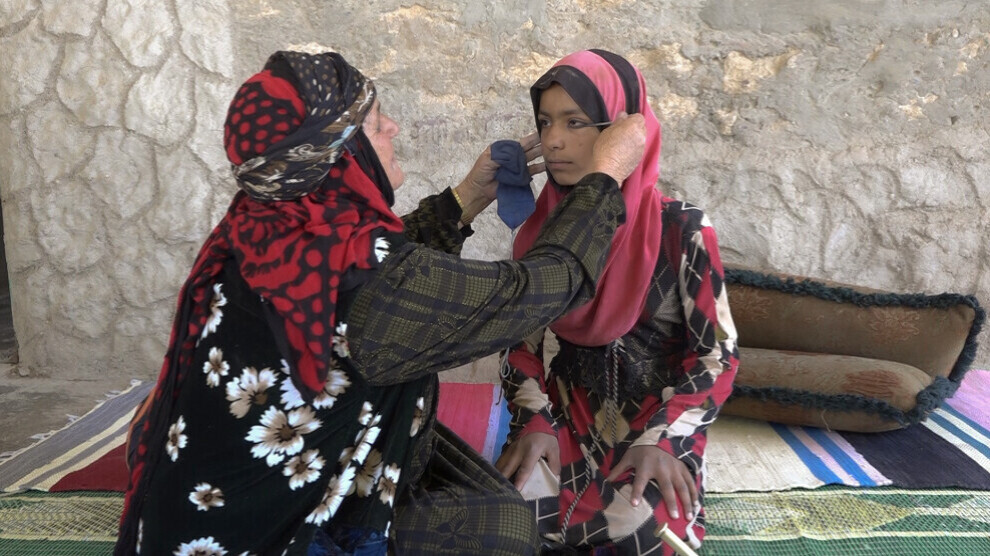She keeps kohl culture alive
Fatima El-Xelef prepares the ancient craft of kohl in the way her mother taught her. Speaking about the benefits of kohl, she said that kohl is a symbol of joy and happiness.

ZEYNEB XELÎFE
Deir ez-Zor- The use of kohl dates back to 3500 BC. Glass kohl filled vases with ivory sticks for its application were found in 4,000-year-old Pharaonic tombs. In the past, both men and women used kohl. Kohl, also known as Arab eyeliner, is made of stibnite. Stibnite is found especially in the Middle East, North Africa, South Asia, Morocco and Damascus. Stibnite, sometimes called antimonite, is good for the eyes.
She learned how to prepare kohl from her mother and grandmother
65-year-old Fatima El-Xelef, who lives in the Ebû Hardûbe town of Deir ez-Zor, learned how to make kohl from her mother and grandmother. “All the ingredients used in preparation of Arab kohl are natural. It is a heritage still practiced by women today. Making kohl at home is very easy. Its main ingredient is Antimony stone. It is called Kohl stone by local women. The stone is put in the tandoor and kept in it for two or three hours. Then, we grind it and add some herbs inside it. We fill it in a bottle and wear it.”
Benefits of kohl
Stating that they have worn kohl since their childhood, Fatima El-Xelef said,” My mother, grandmother and village women bought the materials used to make kohl from the peddlers who came to the village. While they were preparing kohl, we visited them and learned how to make it. Kohl is said to have many benefits for the eyes. It protects against eye infections, and safeguards your peepers from the harmful effects of the sun.”
“Kohl is the symbol of joy and happiness”
Stating that Arab men used to wear kohl, Fatima El-Xalef said, “Now, mostly women wear kohl. Kohl is the symbol of joy and happiness for us.”
